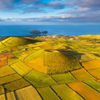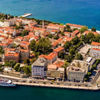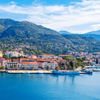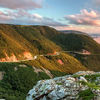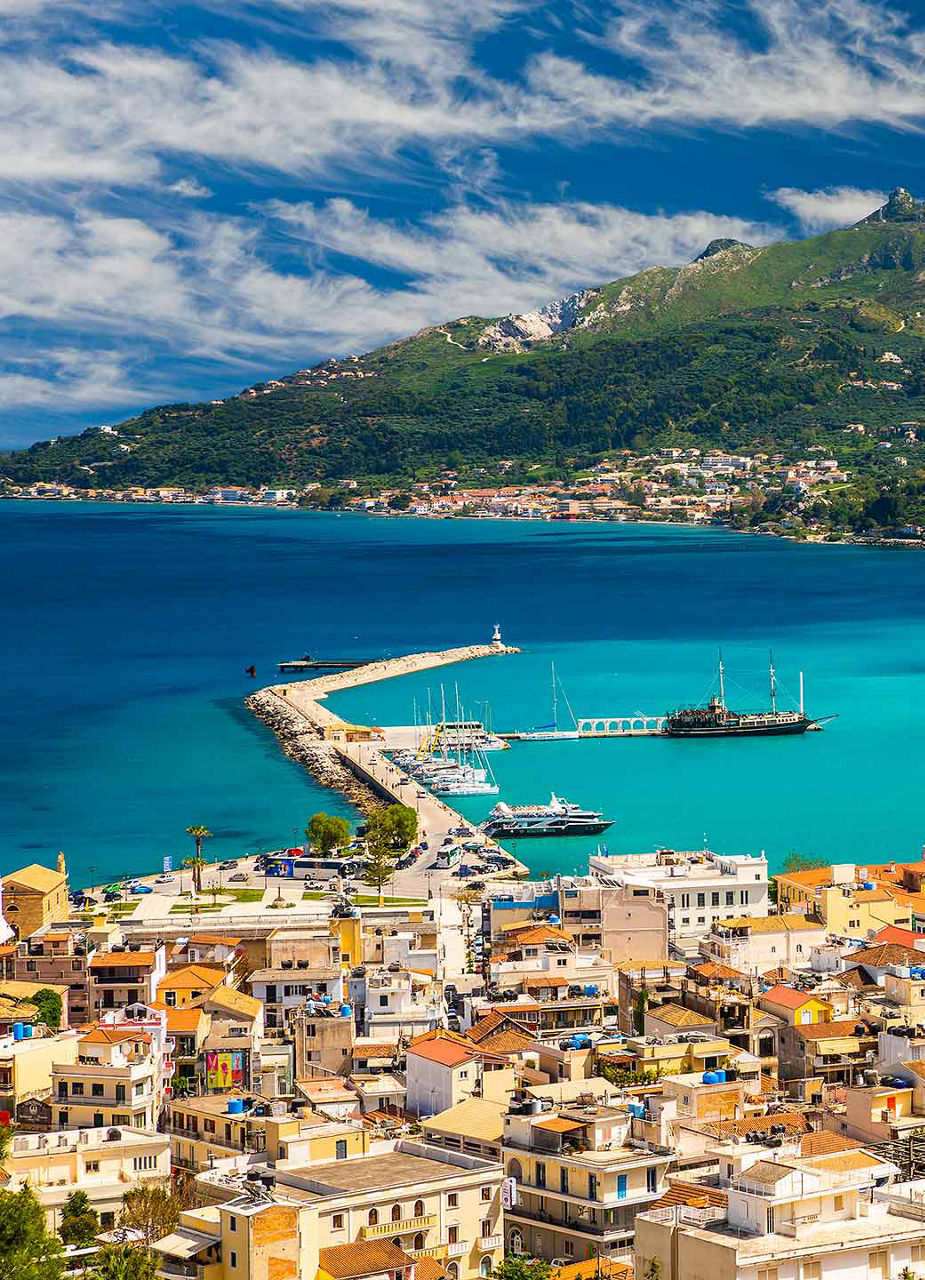
It doesn’t get any greener than this: Spain's Costa Verde
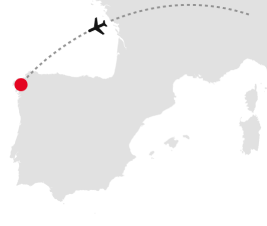


Green coastal tour: from Santiago de Compostela to Bilbao
Here's an almost secret tip: despite its undisputed beauty, the Costa Verde, the wild natural landscape on the Spanish Atlantic coast, has so far been spared from mass tourism. Between Galicia and Cantabria, the majority of holidaymakers are Spanish. The region is characterised by a particularly mild, not too dry climate, which is why the lush vegetation extends all the way to the sea. The cultural traditions of the original Celtic population are still recognisable today, especially in the music and cuisine. Whether by hire car from Santiago de Compostela or on the luxury Costa Verde Express train, a tour through this region is certainly something special. You could book the return flight from Bilbao.

Santiago de Compostela: pilgrimage destination and place of pleasure
The starting point of Santiago de Compostela, the world-famous place of pilgrimage at the end of the Way of St James, is a superlative in itself. The destination of the international pilgrims is the Catedral de Santiago de Compostela, where the bones of St James the Apostle are said to be buried. A detour there is of course a must. Afterwards, we head for an aperitif in the old town, which is a UNESCO World Heritage Site. The restaurant ‘A Maceta’ can also be found there. It is hidden behind an inconspicuous entrance, but has a garden and a beautiful dining room. Inspired by the traditional cuisine of Galicia, the kitchen team creates dishes using regional products, with a subtle Asian flavour to enhance the enjoyment.


Santiago de Compostela: art, architecture and colourful life
Planning another day in Santiago? Then a visit to the Galician Centre for Contemporary Art (CGAC) is a good idea. It houses a large collection of modern art, including many Galician artworks. The museum's terraces also offer a chic view of the old town. If you fancy a snack, head down to the Mercado de Abastos, the large market hall in the historic city centre. The locals also eat there. Another highlight is the ‘City of Culture’ on Monte Gaiás, an unfortunately unfinished architectural sculpture by New York architect Peter Eisenman.


Ribadeo and Oviedo: natural stone wonders and cider
Around two hours' drive from Santiago de Compostela, west of the small town of Ribadeo, lies “As Catedrales”, the legendary beach of the cathedrals. Wind and water have formed bizarre rock formations here. At low tide, you can walk barefoot between the stone archways. In July, August and September, you have to book your visit online. The journey continues in around 1.5 hours to Oviedo, the ancient capital of Asturias from pre-Romanesque times. There are a lot of chigres here, traditional cider houses. Because in this region, cider (sidra) is high on the list of flavours. Particularly worth seeing in Oviedo are the church of San Tirso and the museums of fine arts and archaeology.

Gijón: maritime past and artistic present
Now it's getting fishy, but in a good way. The large coastal town of Gijón, just half an hour's drive from Oviedo, has grown out of what is probably the most beautiful fishing district in the north of Spain. The former village of Cimadevilla, now the old town, was founded in the 16th century and looks incredibly romantic. Instead of fishermen's huts, there are now restaurants, bars and boutiques. A park with sculptures has been created on the Santa Catalina hill, which is also part of the old town, and the historic Revillagigedo Palace, an international art centre, can also be found there. There are some very good restaurants on the promenade above the beach, which also serve fresh fish. In the evening, when the tide comes in, you have a marvellous view of the sea from there.


Covadonga and Arriondas: in the heart of Asturias
A good hour's drive from Gijón will take you to the historic pilgrimage site of Covadonga. Asturias' first king, Don Pelayo, is buried here. The Battle of Covadonga in 722 AD marked the beginning of the Christian reconquest of the Iberian Peninsula, which had previously been ruled by the Moors. Above the town, there are two beautiful mountain lakes, Enol and Ercina, which can be reached after a short hike. Afterwards, we recommend a visit to the Michelin-starred restaurant ‘El Corral del Indianu’ in Arriondas, just 20 minutes away by car. On some days, a gourmet version of the hearty Asturian fabada stew is served there - maybe you'll get lucky.


Altamira and Santillana del Mar: experience the history of mankind
The furthest back in human history is a sensational discovery made in 1879: the Altamira Cave. It is located just over an hour's drive from Arriondas and contains prehistoric cave paintings that are around 14,000 years old. These paintings have been meticulously recreated in the Neocueva (new cave) of the Altamira Museum. This is because the original cave, just a few metres away, must remain protected. Further along the route, just ten minutes away by car, is a small medieval town with a unique flair: Santillana del Mar. The flower-decorated stone houses, palaces and churches as well as the Colegiata de Santa Juliana, an important Romanesque sacred building, complete the journey into the past.

Santander: the colour of money
Most people associate the city of Santander, just half an hour's drive from Santillana del Mar, with a major economic player: Bank Santander. And indeed - if you stroll along the Paseo de Pereda promenade past the Art Nouveau houses, you will also pass the Jardines de Pereda, a park in which the Botín banking family, owners of Bank Santander, had a silver-shingled avant-garde punk building erected: the Centro Botín cultural and exhibition centre. Also worth seeing is the Palacio de la Magdalena, the holiday palace of the Spanish royal family. The T-shaped palace at the tip of the La Magdalena peninsula is located directly by the sea.

Bilbao: much more than the Guggenheim
You need at least two days to visit Bilbao - even if the journey from Santander only takes a little over an hour. In addition to the famous Guggenheim Museum by Frank O. Gehry, the steel sculptures by Richard Serra, the giant spider ‘Maman’ by Louise Bourgeois or the ‘Tulips’ by Jeff Koons, there is simply an incredible amount to see. For example, the Azkuna Zentroa by Philippe Starck, a leisure, art and cultural centre with a glass swimming pool. Or the historic Artxanda cable car, which was built in 1915 by the Swiss company Von Roll. There is a fabulous restaurant at the mountain station: the ‘Txakoli Simón’. Make sure you book! The pintxo bars in the old town, where tapas are served on skewers, are also perfect for a truly Basque farewell evening.

This holiday tip was presented to you by our cooperation partner:
Header – Photo by Alan on Adobe Stock
Paragraph 1 – Photo by pisels on Adobe Stock
Paragraph 1 – Photo by noradoa on Adobe Stock
Paragraph 2 – Photo by ronnybas on Adobe Stock
Paragraph 3– Photo by Andres Alvarez on Adobe Stock
Paragraph 3– Photo by JB on Adobe Stock
Paragraph 4– Photo by Jose Miguel Sangar on Adobe Stock
Paragraph 4– Photo by dsbost on Adobe Stock
Paragraph 5– Photo by Noradoa-on Adobe Stock
Paragraph 6– Photo by Valery Rokhin on Adobe Stock
Paragraph 6– Photo by SylviePM on Adobe Stock
Paragraph 7– Photo by mehdi on Adobe Stock
Paragraph 7– Photo by Jesus de Fuensanta on Adobe Stock
Paragraph 8– Photo by Jjfarq on Adobe Stock
Paragraph 9– Photo by ksl on Adobe Stock

